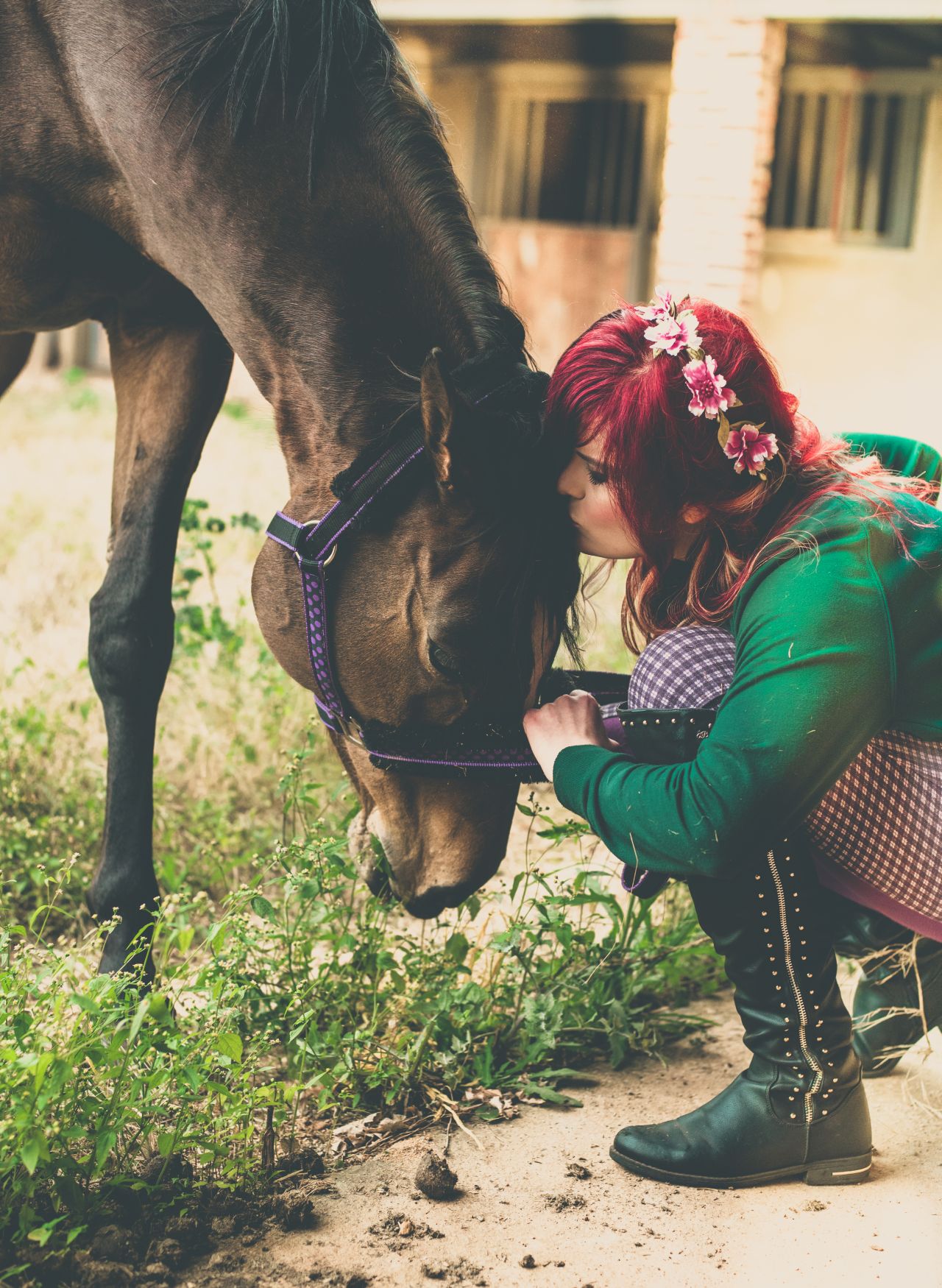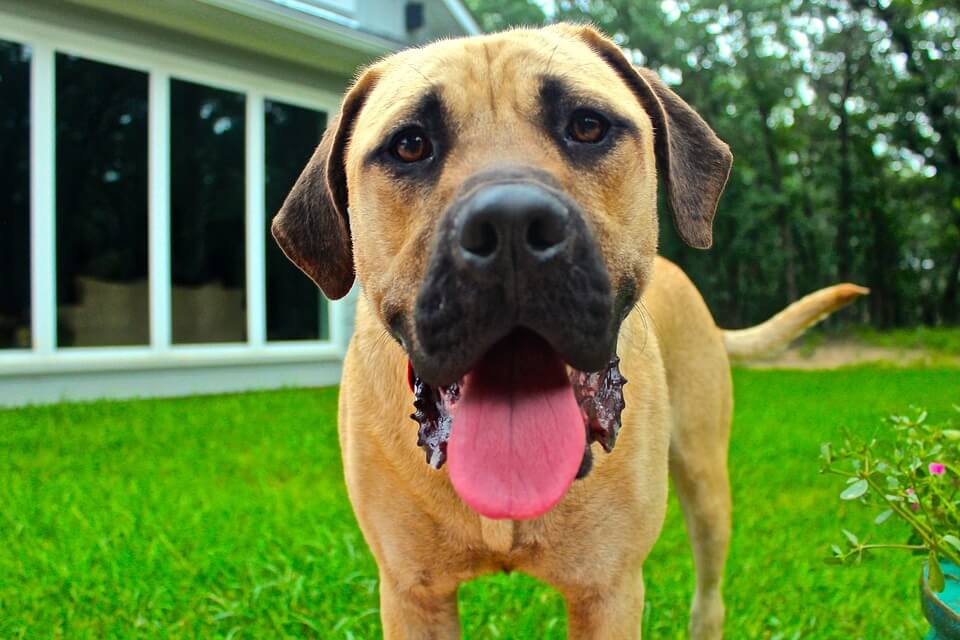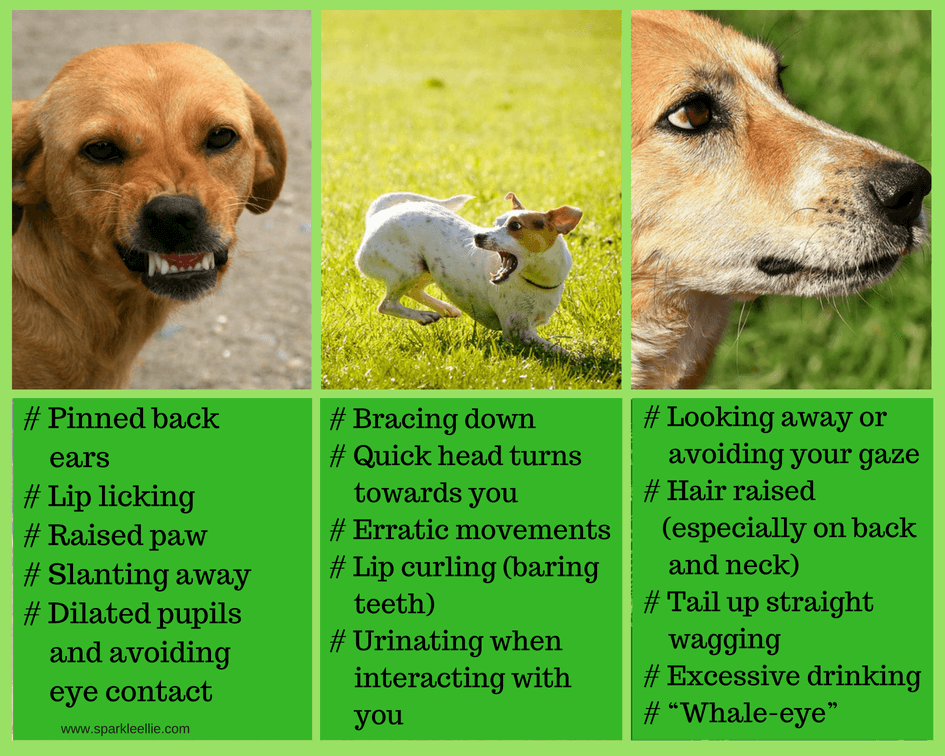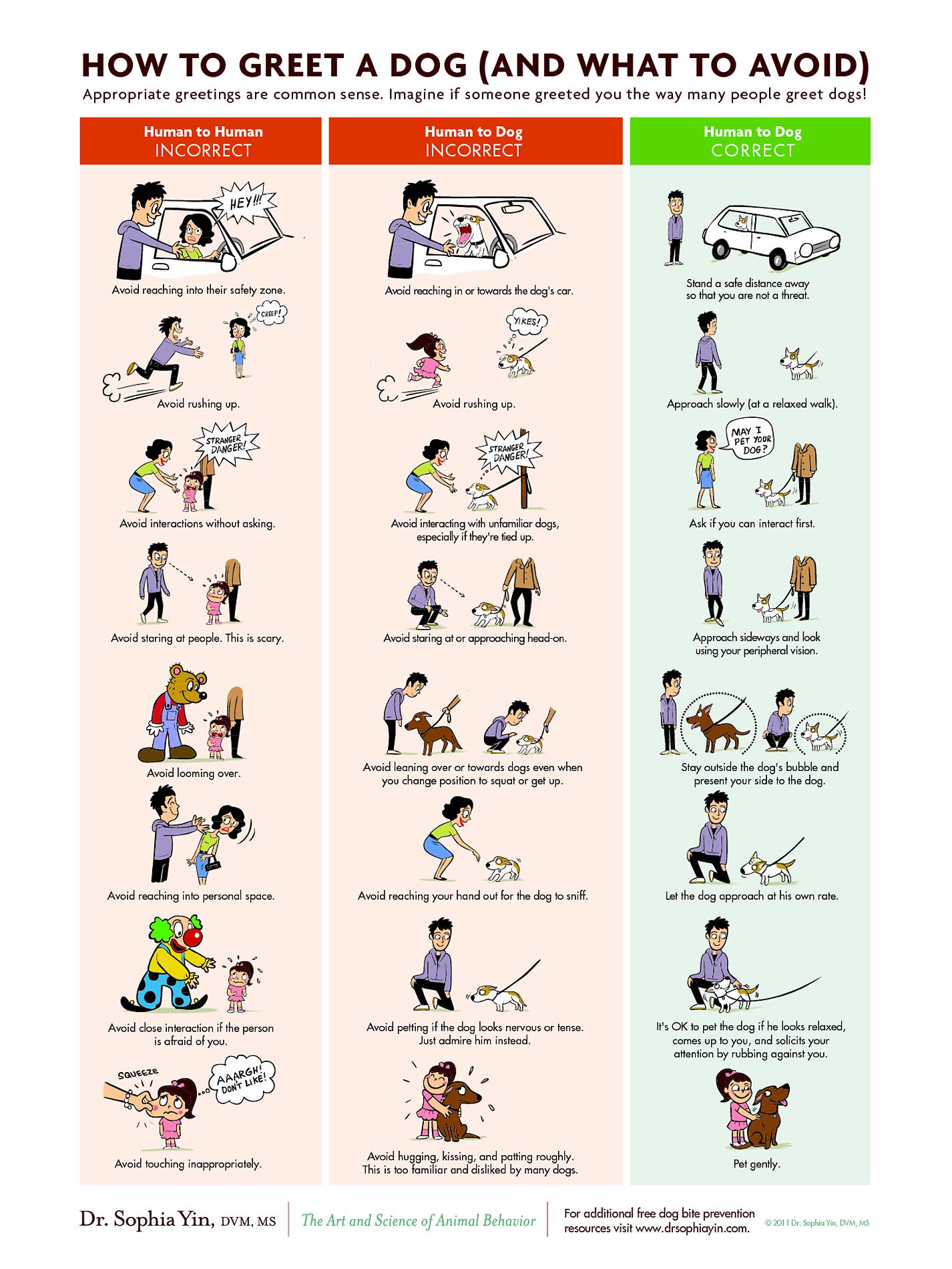Let’s be serious dogs mostly have solid reputations as “man’s best friend”, and the being that thinks their owners are JUST THE BEST since squeaky toys, balls, buttered toast, crotches and dog treats.
But dogs do bite and often humans are at fault or weren’t reading the warning signs the dog was showing, up until the point of the bite. Unfortunately, it is almost always the dog that has to pay – whether it is the death penalty, abandonment or some similar atrocious form of abuse. And all it takes is humans just reading the signs, educating and watching how their kids interact with dogs and a little bit of savvy aforethought (like picturing a kid jumping on a dog’s back might not end in a happily ever after).
So here are some things that even dog connoisseurs need to be aware of when approaching new dogs and of course the basics (yet strangely often ignored) way to safely handle and treat a dog.
So Here is More on How to Greet A Dog…
You absolutely love animals, and dogs are the ultimate; so when you see a beautiful pooch in public, bobbing out of a car, in a park, sidewalk, friends garden or even at the vet, you want to rush up pat him/her, give kisses, smooches, hugs or at the very least a good old scratch behind the ears. But whatever you do, don’t just assume you can, “because most dogs are friendly”. Dogs are complex beings and aren’t all alike, or react the same in every given situation.
SOME BASIC TIPS
It is important when approaching a dog that you:
#1 Always ask the dog’s owner if it is okay to interact with their doggo. They know their dogs best and know how they react to strangers and the situation they find themselves in
#2 Check your body language and posture
#3 (It sounds silly) But do not make direct eye contact
#4 Approach the dog slowly with your side in a standing or squatting position
#5 Get down on his/her level – don’t lean over the dog
#6 Rather let the dog come to you and extend your hand in a non-threating way
#7 Don’t put your face (or jugular) close to the dog’s face
#8 If the dog seems at ease then you can pet him/her gently, speaking in friendly tones
#9 With the owner’s permission, you can give a suitable treat
SOME SIGNS OF DISTRESS IN A DOG
There are some glaringly obvious signs that dogs may not want you to approach them – aggressive barking, growling, tucking tails and running away and charging are examples of clear signs. But sometimes it is the subtler signs that are missed – which even occur after patting the dog has commenced – that lead to bites.
Lookout For These Warning Signs:
If you are petting a dog and he/she suddenly changes from relaxed and friendly tail-wagging to tense and showing any of the above signs – stop touching the dog immediately and slowly withdraw your hand. Also, if there are sudden changes in the environment (loud noises, more people or animals approaching) also stop petting the dog.
WHAT SHOULD A DOG OWNER DO?

You know your dog best. You know what upsets him/her, makes them nervous or stressed. Try not put your dog in any situation that makes them scared or aggressive. Let your dog approach strangers rather than the other way around and keep your dog on a leash in public or potentially stressful situations. In addition, it is highly recommended that you take your puppies to puppy school to teach them to socialise with other pets and people. Ask your vet for a referral.
AND IF YOU ARE RANDOMLY SURPRISED BY A DOG?
You may be minding your own business one day, walking in a public area and find a rather aggressive dog off a leash and charging towards you. What do you do then? Don’t run! It may be your instinct to run. But try stand stiff as a tree and avoid eye contact. If the dog charges or mock charges – talk/shout firmly in a deep voice (not a hysterical scream) – while smacking your hands together and say “No!” or “Go home!”
Once the dog moves away or turns…slowly, walk backwards, facing the dog until you are out of harm’s way. And contact your nearest SPCA for assistance in getting the dog out of harm’s way (until the owner can be found).
THE FINAL DOG TAILS – A QUICK ROUND-UP

Don’t Forget These Points When Next Encountering an Unfamiliar Pooch:
Dogs bite usually out of defence – when approached by a stranger and unsure, a dog goes into fight and/or flight mode.
Read the dog’s body language – dogs don’t have words to tell you to bugger off or that they are scared; they use body language to communicate with you and they expect you to understand.
Don’t stare – staring is intimidating; direct eye contact is fine but locking eyes for longer than three seconds with a stranger can trigger something in a dog. Whether a dog is friendly or not – it’s rude to stare.
Stay out their bubble – animals like people have personal space issues and feel protective over their territory. Respect their space. You wouldn’t like to find some stranger just walking in your garden or home – why should dogs be any different?
Let the dogs rather approach you – as touched on several times in this blog. Let them sniff the top of your hand (less flesh to latch onto if they decide they don’t like your scent), before evaluating if you can pat them.

Watch your body language – approach sideways, not looming over the dog, moving slowly, no staring and come down to the dog’s level without shoving your face and neck at the dog. NEVER RUN.
Never assume a dog is friendly – dogs generally have solid reputations but don’t take this for granted. So always speak to the owner before assuming anything.
Don’t approach a sleeping dog – Let sleeping dogs lie, sound familiar? He/she may startle and bite you out of surprise. And try not scream or make loud noises around dogs for the same reason.
Never ever – pull a dog’s tail, ears or pick up his paws. Don’t pick up small dogs (or big dogs) – an old injury or arthritis in a joint can earn you a bite. Once again first ask the owner before picking a dog up.
Don’t take it personally –there is nothing wrong with you if a pooch doesn’t like you. There are plenty of doggies that think you are the best in the world – so just move upwards and onwards.
In the end, dogs are beautiful creatures, when loved, respected, and “read” correctly, will be one of the best friends you could ask for. As H Norman Wright so eloquently put “A dog, companion, friend, protector, playmate and life-changer. Dogs add a dimension to our lives that otherwise would just be a vacant spot. They work for us, guard us, play with us, entertain us, love us, keep us company and change our lives.”
Please consider sharing this blog – it could possibly help people be more mindful around dogs, more doggie lives can be spared, and more pups can be understood. Plus, you will be supporting a fellow South African.
To read more Sparkle Paws and Glitter Trail posts CLICK HERE
To read the latest Sparkle Ellie posts CLICK HERE

A little more about Sparkle Paws and Glitter Trails and Sparkle Ellie…
 A love for animals, and only wanting the best for pets in South Africa, Africa and abroad is at the heart of Sparkle Paws and Glitter Trails; and although the blog isn’t monetised yet, as much and as far as possible, resources are stretched, and funds are donated to shelters, for causes such as NSPCA battling against dog fighting and initiatives helping feed and deworm and care for community animals in need. But in the end Sparkle Paws and Glitter Trails believes love and charity start at home – so only the best care, food, love, blankets and the like are provided for Kuhie, Cheeky, Munchkin, Lulubelle and Folly (four felines and an equine). Thank you for reading this blog – by doing so you are supporting a fellow South African and you are part of a greater dream that will one day support South African communities and animals alike.
A love for animals, and only wanting the best for pets in South Africa, Africa and abroad is at the heart of Sparkle Paws and Glitter Trails; and although the blog isn’t monetised yet, as much and as far as possible, resources are stretched, and funds are donated to shelters, for causes such as NSPCA battling against dog fighting and initiatives helping feed and deworm and care for community animals in need. But in the end Sparkle Paws and Glitter Trails believes love and charity start at home – so only the best care, food, love, blankets and the like are provided for Kuhie, Cheeky, Munchkin, Lulubelle and Folly (four felines and an equine). Thank you for reading this blog – by doing so you are supporting a fellow South African and you are part of a greater dream that will one day support South African communities and animals alike.
Check out this awesome resource from SOSARL.org :
Sources and to Read More: ThePetBlog.com Ddfl.org Sprucepets.com







